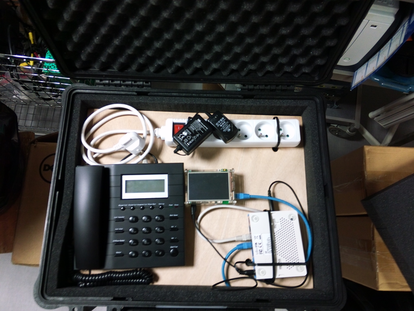Conclusion¶
The Mirobox is a tool that will let volunteers at advance posts to communicate with the Red Cross, even if there is no connectivity available, and use specific software thanks to the single-board computer integrated to the Microbox.
After the testing phase, and the changes operated due to some issues, the Microbox system is fully operational. It includes the needed services that we have specified, and cope with the different constraints due to the advance posts situations.
We didn't have the opportunity to field test our suitcase, but thanks to the different mechanical and network test we have done, it will have no issue on the field. The suitcase is waterproof, resistant to shocks and carriable by a single person. We can connect it to every internet connectivity possible, thanks to the router. The satellite test could not be done outside, but our test in the lab was conclusive.
This is not the final form of the Microbox, we can had equipments to it, there is still some space for adding for example a bigger screen (in the upper part of the suitcase). We can also think of an integrated satellite communication mean.
Thanks to the scalability of the Raspberry Pi 3, many solutions can be implemented. For now, there is no specific software implemented in it, there is only an OS. We can for example implement a camera and a microphone for video-calling, the Raspberry can handle Skype.
The main issue with Raspberry is that the storage is an SD card, it will be better with a faster storage system. The Odroid-XU3,for example, can support SSD storage, which is faster than a SD card.
We can also improve the waterproofing, the opened Microbox is not waterproof. For that, we could put a removable plastic cover on the equipments.
The main problem with the Microbox is that it need a power supply. The next big step is to had a battery with enough autonomy, which can be charged by every possible energy supply. That way, the Microbox would be completely autonomous.
